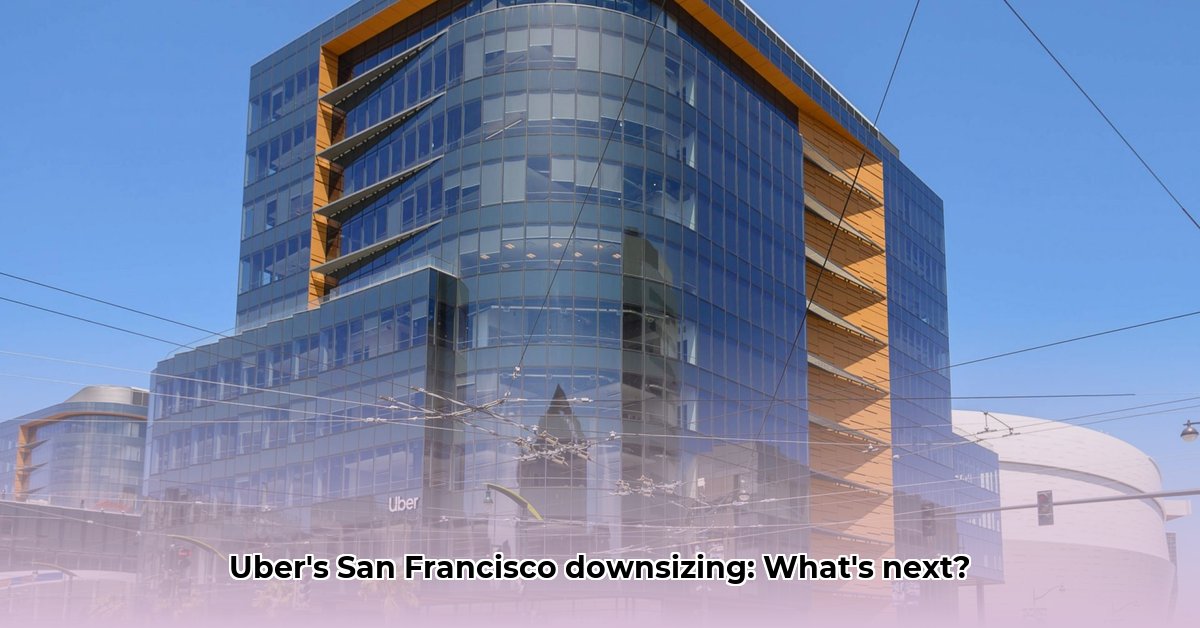
1725 3rd Street San Francisco: A Case Study in Hybrid Work's Impact on Commercial Real Estate
Uber's decision to sublease its largely unoccupied 285,000-square-foot office space at 1725 3rd Street in San Francisco's Mission Bay is a significant event, reflecting the evolving landscape of commercial real estate in the wake of widespread hybrid work adoption. This move underscores the challenges faced by companies and the broader implications for the city's real estate market. With San Francisco's office vacancy rate reaching a staggering 26.4% in early 2025, Uber's sublease adds to the existing pressure. But is this merely an isolated incident, or a harbinger of significant changes to come?
This situation presents a compelling case study demonstrating the complexities of adapting to the post-pandemic work environment. The sheer scale of the unoccupied space—a building never fully utilized—highlights the disconnect between pre-pandemic planning and the realities of hybrid work. This raises critical questions for real estate developers and businesses alike: How accurately can we predict future office space needs in a world prioritizing flexible work arrangements? And what strategies can effectively mitigate the risks associated with managing large, underutilized commercial properties?
Three Pivotal Points:
Hybrid Work's Impact: Uber's transition to a hybrid model, requiring employees in the office only a few days a week, directly influenced the decision to sublease. This exemplifies the widespread shift in workplace dynamics, demanding flexible office strategies.
Market Volatility: The high vacancy rate in San Francisco's office market exacerbates the challenges. Uber's sublease adds to this existing pressure and highlights the need for innovative solutions to manage surplus office space.
Strategic Risk Mitigation: Uber's choice to sublease rather than sell reflects a calculated risk-mitigation strategy, balancing potential financial losses with the need for flexibility in response to evolving workplace trends. However, successfully subleasing such a large space presents considerable challenges.
How to Mitigate Risk in Subleasing Large Unoccupied Commercial Real Estate in San Francisco
Uber's experience with 1725 3rd Street provides valuable lessons for companies facing similar situations. Successfully navigating the complexities of subleasing large, vacant spaces requires a proactive and strategic approach. Ignoring these risks can lead to significant financial losses.
Strategic Mitigation Steps
Successfully mitigating the risks associated with subleasing large unoccupied commercial real estate in San Francisco requires a multi-pronged approach. The following steps offer a framework for reducing potential losses:
Comprehensive Due Diligence: Before initiating the subleasing process, thoroughly analyze your master lease agreement to fully comprehend your rights and obligations regarding subletting. Identify any restrictions or stipulations imposed by your landlord. This due diligence is crucial for avoiding future conflicts.
Rigorous Market Analysis: Conduct thorough market research to determine competitive lease rates for comparable properties in the area. This should include an evaluation of current market demand for office space in your specific location, ensuring that your offered rate is competitive yet profitable.
Meticulous Tenant Screening: A thorough vetting process is paramount. Investigate each potential subtenant's financial stability, business history, and creditworthiness. A comprehensive background check is crucial for avoiding potential issues following the signing of the contract.
Watertight Lease Agreement: Enlist legal counsel to draft a comprehensive sublease agreement that clearly defines responsibilities, payment terms, termination clauses, and dispute resolution mechanisms. The inclusion of clauses mitigating defaults is especially critical.
Open Communication with the Landlord: Maintain open communication with your landlord throughout the entire subletting process. Ensure that you secure their approval for potential subtenants and any planned modifications to the premises.
Proactive Risk Management: Anticipate potential contingencies by incorporating clauses into the agreement addressing payment defaults, lease breaches, or other unexpected circumstances. Consider securing insurance to mitigate potential financial losses.
“The San Francisco commercial real estate market is experiencing significant shifts due to hybrid work models,” says Dr. Anya Sharma, Professor of Real Estate Economics at the University of California, Berkeley. “Companies need to be proactive in assessing their office space needs and employing strategic approaches to manage surplus space.”
This case study highlights the changing dynamics of the commercial real estate market and underscores the need for adaptable strategies. The shift towards hybrid work models necessitates innovative approaches to managing office space and mitigating the risks involved in subleasing large, vacant properties. Further research into the long-term impacts of hybrid work on commercial real estate is critical to providing companies and developers with the tools and insights necessary to navigate this transforming landscape.